Survival Food for Free?
April 29th, 2020
4 minute read
If you’re like me, you’ve started poring over the spring seed catalogs long before spring is officially here, choosing new varieties of garden produce to plant. Maybe you’ll be adding a fruit tree or two, or even just sticking to tried-and-true winners for this year’s garden.
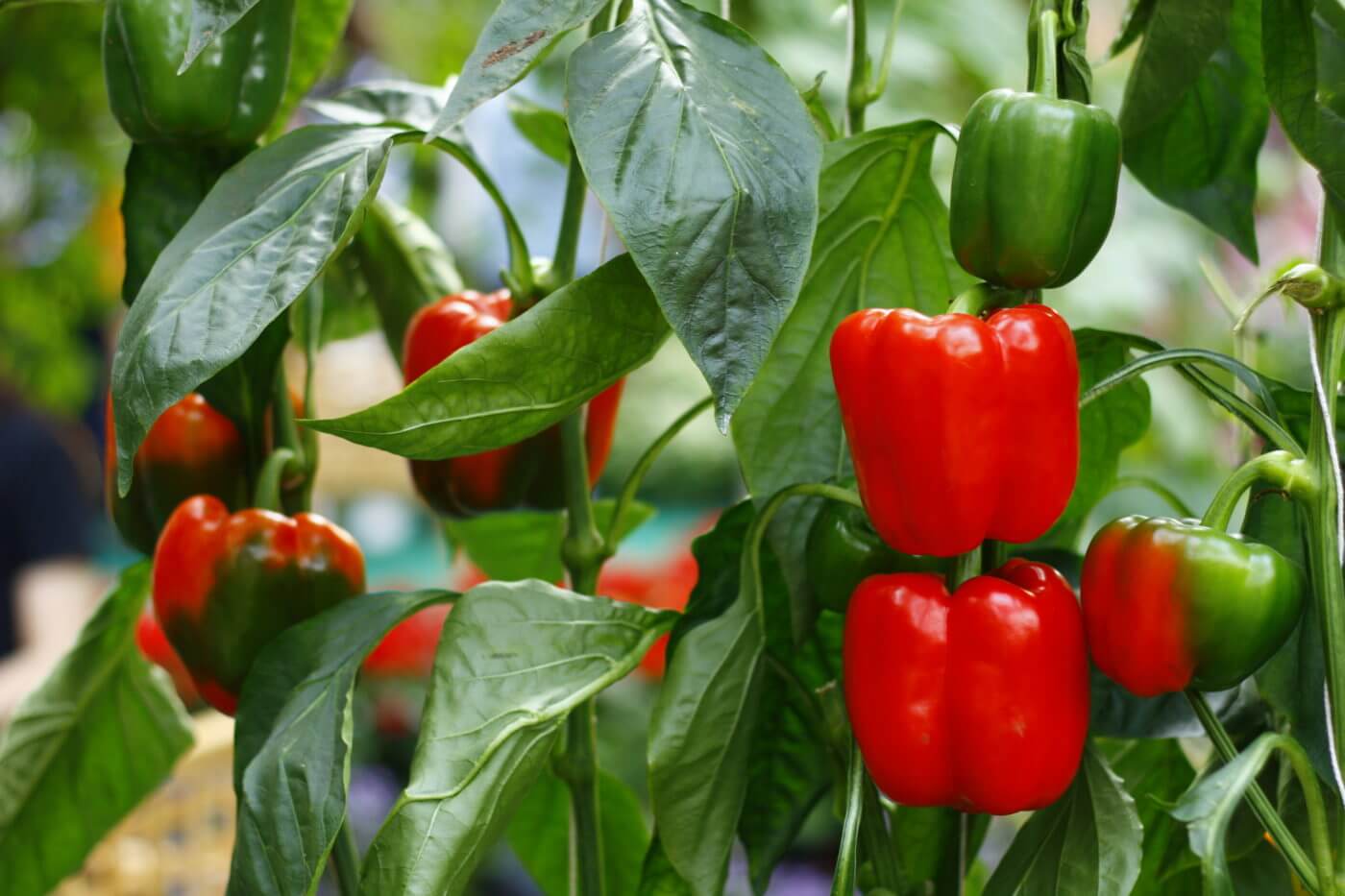
What if I told you that you could have part of your garden inside all the year through … without buying seeds? It’s called replanting, and it is way easier than you ever thought.
What is Replanting?
With replanting, you’re literally regrowing what’s left of produce you’ve purchased or already harvested. You’d be surprised at how little work it requires to get started or keep going. What’s more, it’s good for the environment as well since you can use compostable items like eggshells as starters.
Not everything can be grown this way, but a lot of things can. I’m currently growing quite the garden in my kitchen bay window, and have already harvested several things, only to have them keep right on growing. The best part is it’s all growing from scraps of fruits and vegetables I either bought at the store or got from neighbors. Let’s take a closer look at how to do it. Chances are you can start today with things already in your fridge.
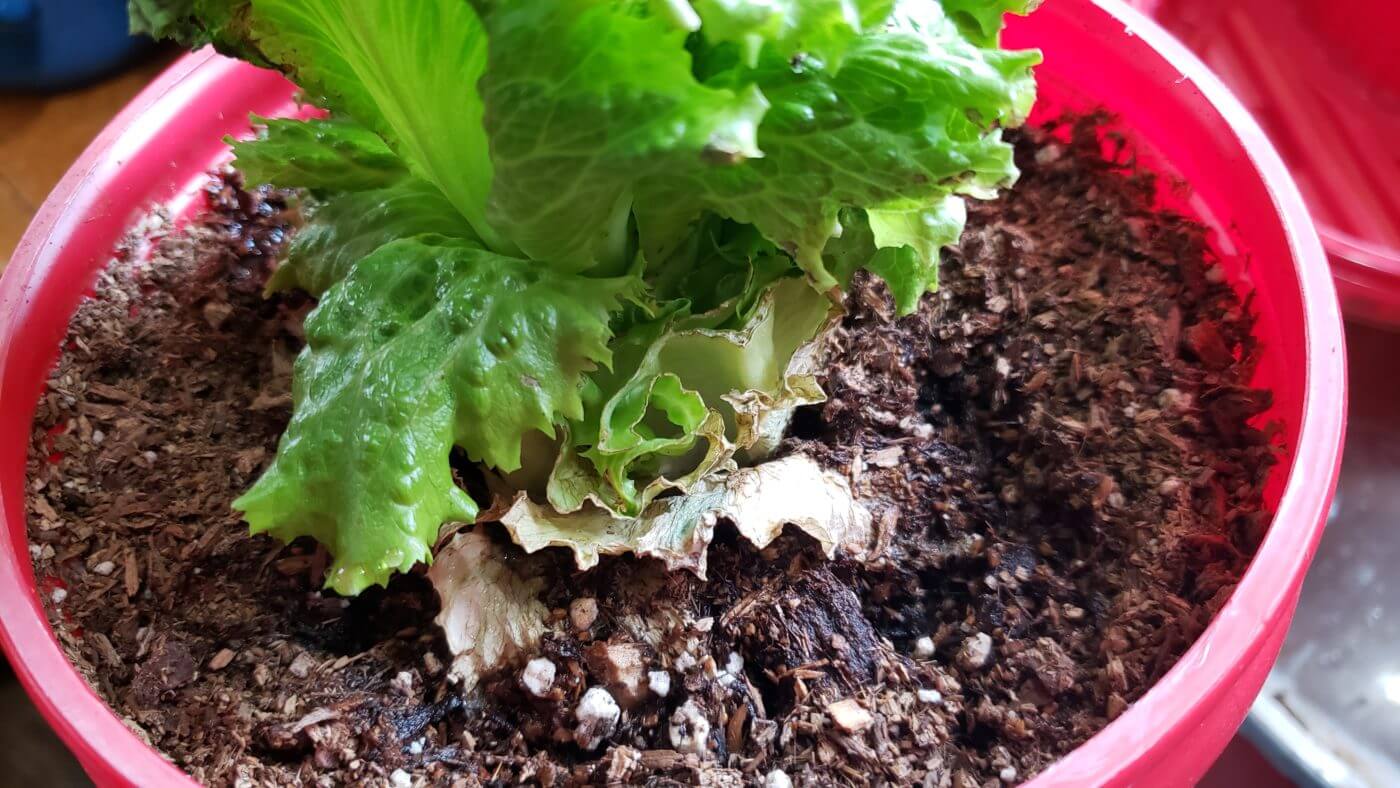
Green Onions
This might be the easiest of all, and it’s the one I started with. Simply take the white bulb part, going up about 2″, and snip it off. Use the green part as usual, and then take the bulb end and place it in about an inch of water. The onions will start growing right out of the cut off stem, and you’ll see visible growth in only three days or so. It takes about two weeks to be able to harvest them again, and after that time you put them in a container to keep growing.
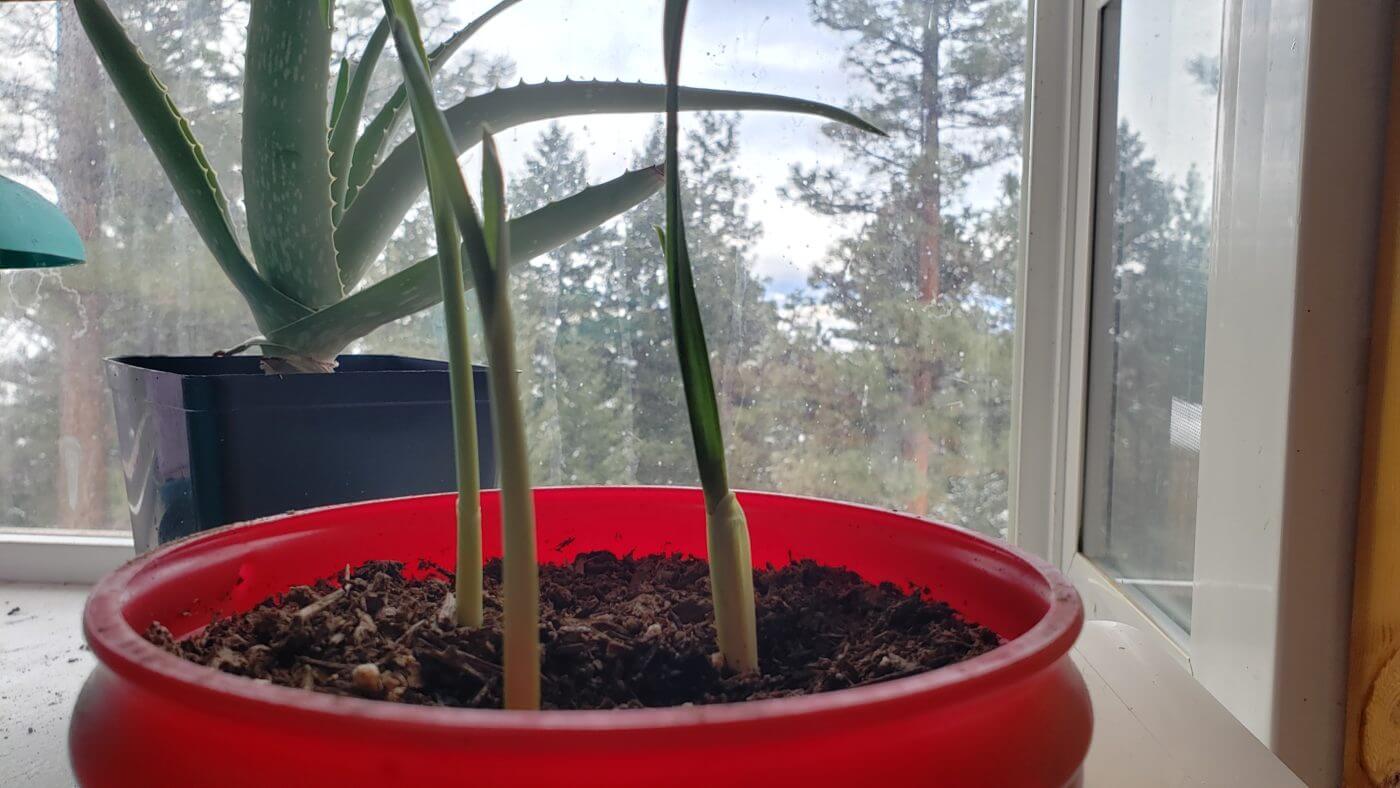
Celery
The same principle applies to getting fresh celery. Just take the bunch you bought at the store, cut off the bottom three inches (the “butt”) and put it in water about 1.5″ deep. You’ll see growth in only a few days. After two weeks, I planted mine in an empty coffee container with some holes in the bottom to let excess water drain out.
Potatoes
I cannot count the number of times I’ve snagged those old, forgotten potatoes from the back of the pantry, cut them into pieces that have an eye or two each, and planted them in a container only to get a nice little trove of fresh new potatoes. These go right into a large container filled about only 4″ deep. Once the plants are about 8″ high, I add six more inches of soil, and when they reach 8″ again, I add six more inches of soil. Then I let them grow until they’re done. Instead of only a few potatoes at the end, I have layers and layers of them. This is best done in a 5-gallon bucket but can be done in anything really, as long as it’s deep enough.
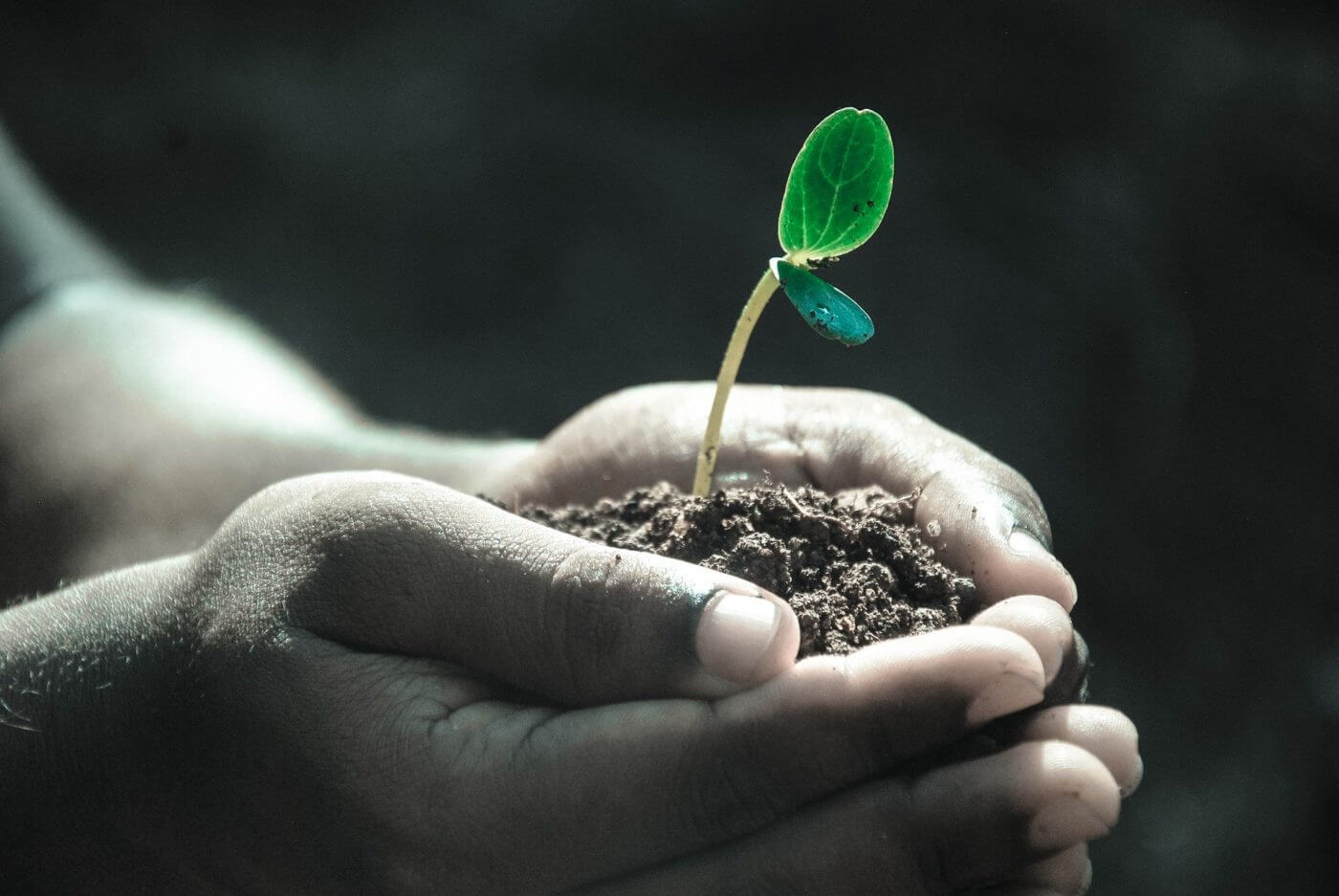
Peppers
Peppers are full of seeds, and you can simply use half of the pepper as a kind of built-in planter. Fill it with soil, spray with water, and put the pepper half in a sunny windowsill. After about two weeks, just put the pepper and all in a pot and cover with soil.
The Downsides
There are a few things to know when replanting. If you’re set on having heirloom varieties, this probably isn’t the right way to go for you. You’re essentially just regrowing whatever you bought at the grocery store.
It also won’t be a good replacement for a full garden during your zone’s growing season. Unless you have a lot of sunny windows, you may be limited in how much you can grow.
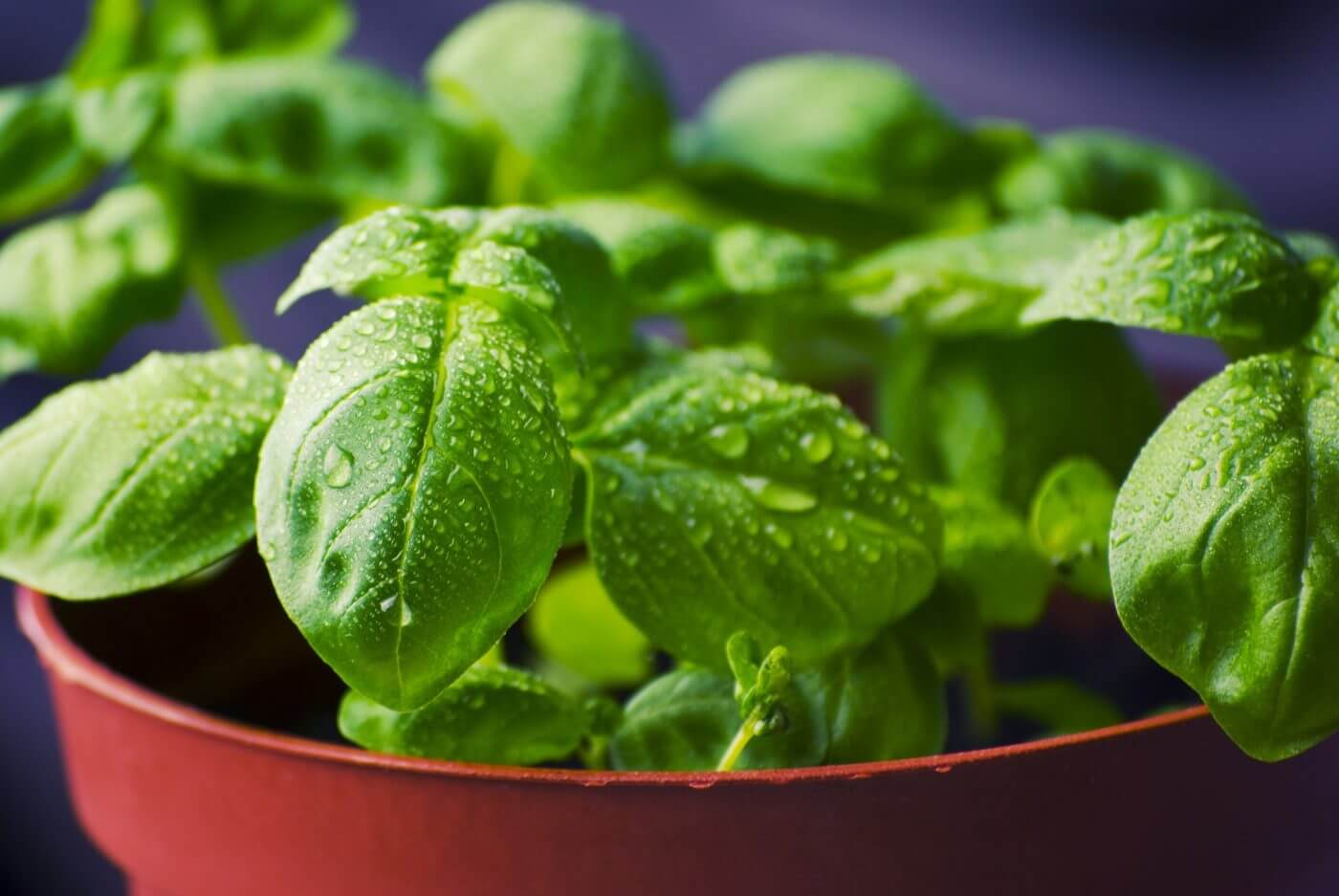
The good news is that both of these downsides can be mitigated. If you’re already growing a garden outside every year, you can use replanting to extend the growing season and keep some fresh veggies and herbs long after your outdoor garden is covered in snow. If your garden is made up of heirloom plants, then that’s what you’ll get back in replanting.
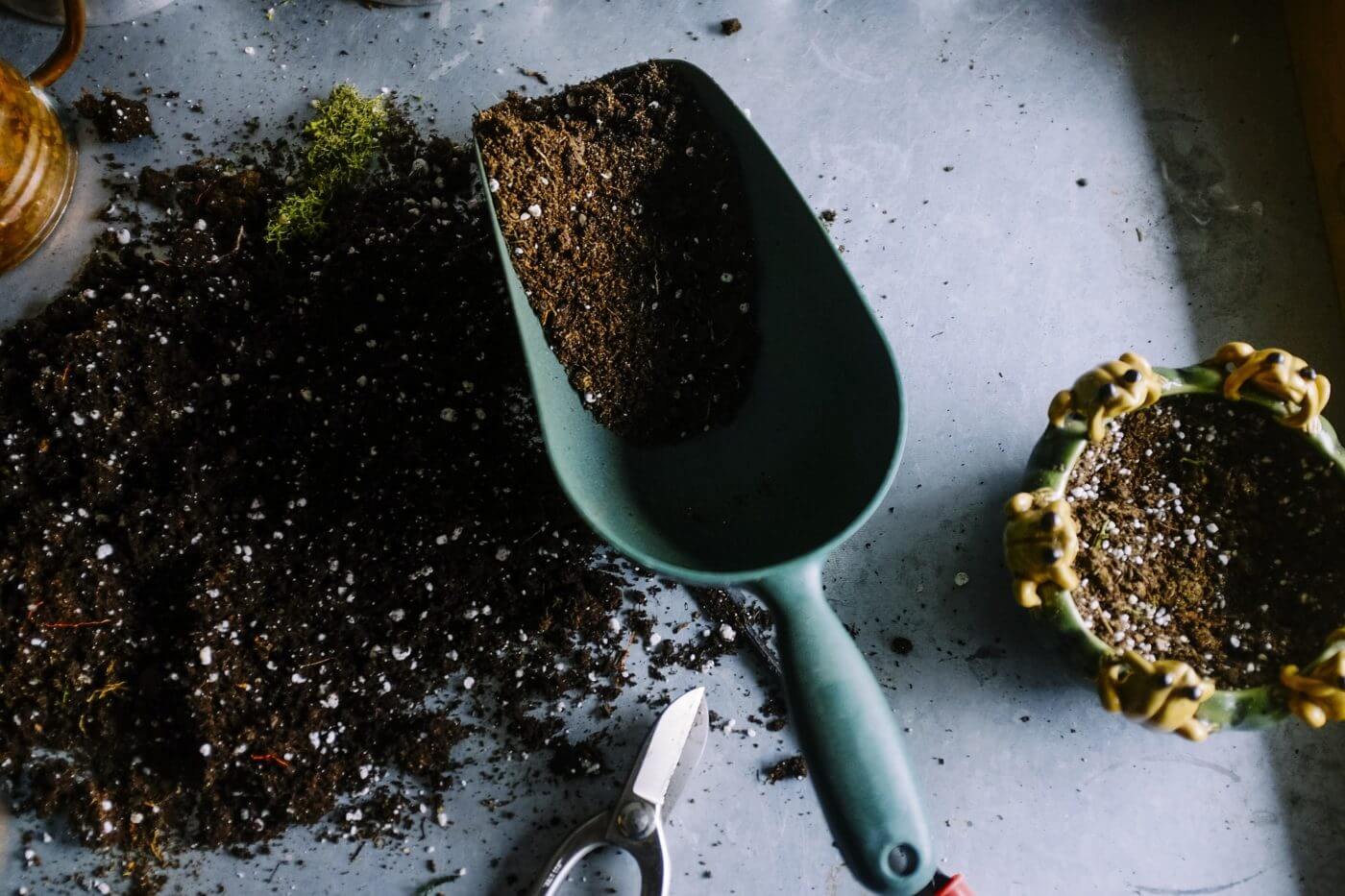
If you have room in your home to hang or stand a few grow lights, then sunlit windows become much less of an issue as well. You can expand to however many lights you have.
Instead of throwing your vegetable scraps away, composting them all, or even throwing them to your chickens, try replanting. You might be surprised at how easy — and effective — it is.
Editor’s Note: Be sure to check out The Armory Life Forum, where you can comment about our daily articles, as well as just talk guns and gear. Click the “Go To Forum Thread” link below to jump in!
Join the Discussion
Continue Reading
Did you enjoy this article?

 72
72






